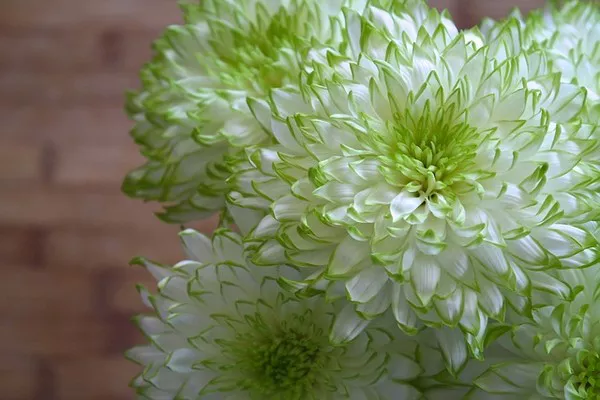Moss can be a charming addition to your garden or yard when it’s intentionally cultivated in the right places. However, when moss begins to encroach on your lawns, flower beds, or garden paths, it can quickly become a nuisance. Many gardeners face the challenge of eliminating moss without harming their beloved plants. In this article, we will explore the reasons for moss growth, its impact on plants, and provide professional insights into effective methods for moss removal that leave your plants unscathed.
Understanding Moss and Its Growth
Mosses are small, non-vascular plants that thrive in damp, shady, and acidic environments. They reproduce through spores and can form dense carpets in areas with the right conditions. While moss can be aesthetically pleasing in certain garden designs, it can become problematic when it starts competing with your desirable plants for essential resources.
Reasons for Moss Growth:
Shade: Moss thrives in low-light conditions. If your garden or yard is heavily shaded due to trees or structures, moss is more likely to take root.
Poor Drainage: Excessive moisture and poor drainage can create a hospitable environment for moss. Overwatering or compacted soil that doesn’t drain properly can contribute to moss growth.
Low pH: Moss prefers acidic soil. If your soil’s pH is low, it may encourage moss to grow, especially in areas with poor air circulation.
Compact Soil: Mosses are not competitive plants and cannot thrive in densely packed soil. Compacted soil is an ideal breeding ground for mosses.
The Impact of Moss on Plants
Moss can hinder plant growth and health in several ways, making its management essential:
Competition for Nutrients: Moss competes with your plants for nutrients like water, sunlight, and minerals. This competition can stunt the growth of your garden plants.
Reduced Air Circulation: Moss can create a barrier that restricts airflow to the soil, which can lead to root diseases and hinder plant growth.
Weakening Soil Structure: Mosses can further compact soil, making it difficult for plant roots to penetrate and receive the necessary nutrients and moisture.
Aesthetic Concerns: In gardens where a neat and manicured appearance is desired, the presence of moss can be unsightly.
Effective Strategies for Eliminating Moss Without Harming Plants
Now that we understand the reasons for moss growth and its potential impact on plants, let’s explore professional strategies for moss removal without causing harm to your garden or yard.
Adjust Soil pH:
To discourage moss growth, raise the pH of your soil to a more alkaline level. You can do this by adding lime to the soil as recommended by a soil test. By making the soil less acidic, you make it less favorable for moss but still suitable for your garden plants. Keep in mind that this method takes time to yield results, so be patient and monitor the pH levels.
Improve Drainage:
Moss thrives in moist environments, so improving drainage in your garden can deter its growth. To achieve better drainage, consider the following:
a. Install French drains or other drainage systems to direct excess water away from problem areas.
b. Use raised beds or containers for your garden to control moisture levels more effectively.
Increase Sunlight Exposure:
If possible, trim or remove overhanging branches or structures that block sunlight from reaching moss-infested areas. Moss thrives in low-light conditions, so increasing sunlight exposure can make the environment less hospitable for its growth.
Aerate the Soil:
Aeration can help reduce soil compaction, making it less favorable for moss. Use aeration tools to create channels in the soil that promote better air circulation and water infiltration. This will benefit your garden plants while discouraging moss.
Physical Removal:
Manual removal of moss is an effective short-term solution. Use a rake or stiff brush to gently remove moss from the surface of your lawn or garden bed. Ensure you don’t disturb the soil or damage your plants in the process. Be diligent in keeping moss at bay, as it can return if conditions remain favorable.
Apply Moss-Killing Products:
Several moss-killing products are available on the market that can effectively eliminate moss. These products often contain ferrous sulfate or potassium salts of fatty acids and can be applied as a liquid or granular form. Follow the manufacturer’s instructions carefully to ensure you do not harm your plants. It’s essential to choose moss-killing products that are plant-safe and won’t harm your desired vegetation.
Promote Lawn Health:
A healthy lawn is less susceptible to moss invasion. To ensure your grass remains robust and resistant to moss, follow these guidelines:
a. Regularly fertilize your lawn with appropriate nutrients.
b. Mow your grass at the correct height for your grass type.
c. Overseed your lawn to promote dense grass growth that will outcompete moss.
Conclusion
Managing moss in your garden without harming your plants requires a combination of preventive measures and effective removal techniques. By addressing the root causes of moss growth, such as shade, poor drainage, and low soil pH, you can create an environment that is less hospitable to moss. Additionally, methods like physical removal, soil aeration, and the careful application of moss-killing products can help you eliminate existing moss infestations while preserving your garden’s health and beauty.
Remember that achieving and maintaining a moss-free garden is an ongoing process. Regular monitoring and maintenance are essential to prevent moss from returning. By implementing these professional strategies, you can enjoy a lush and thriving garden while keeping moss at bay.


